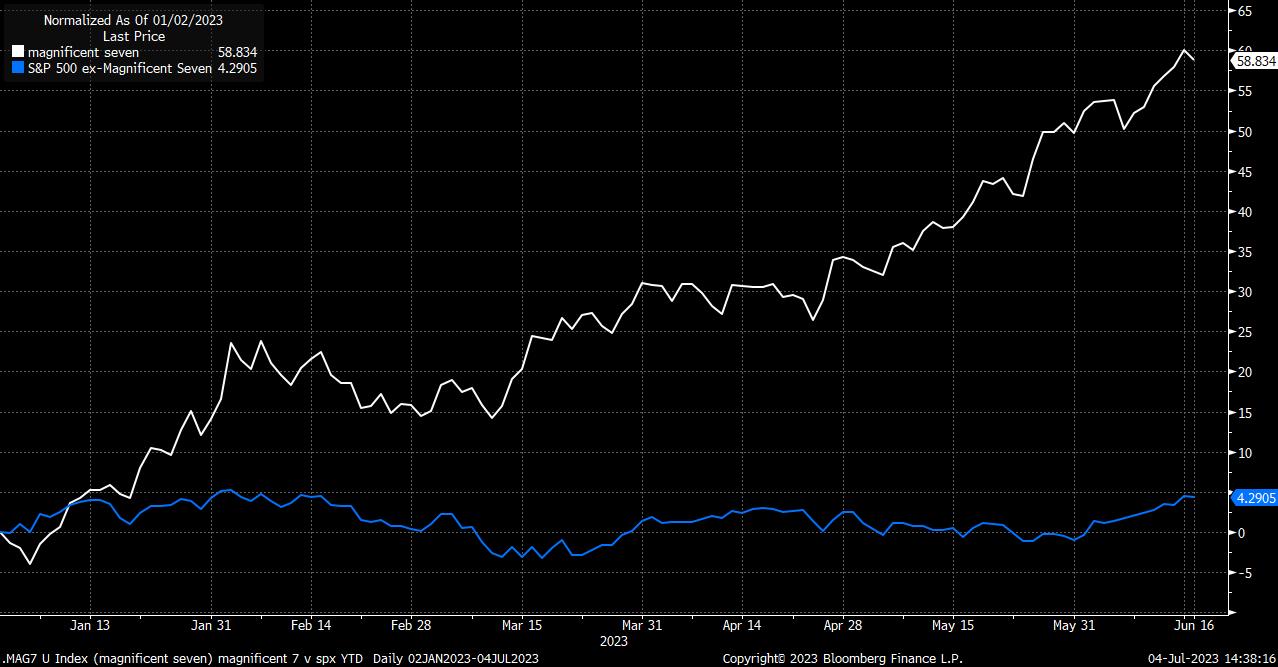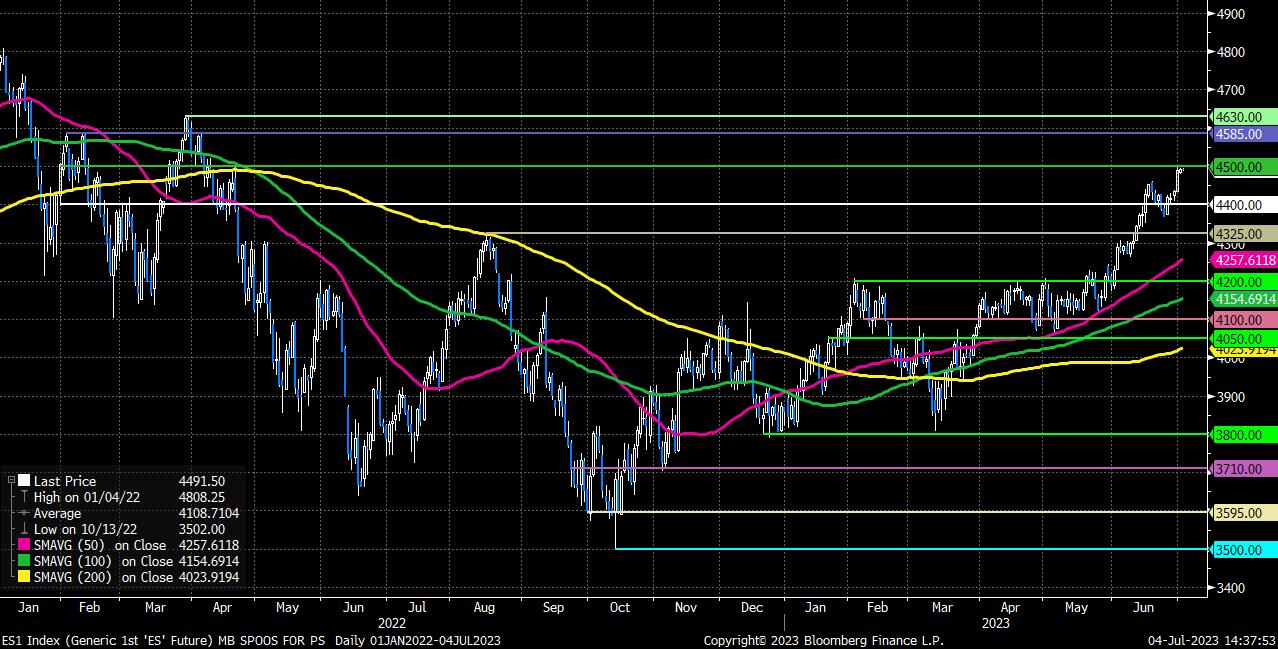- English (UK)
Analysis
A slightly crude, but relatively simple, way to evidence this outperformance is to compare the YTD return of the S&P 500 (the standard, market cap-weighted benchmark of US equities), and an equal-weighted version of the same index. Although the gap between the two has narrowed of late, the cap-weighted index has still outperformed by almost 10% during the first six months of the year.
_Daily_2023-07-04_14-38-21.jpg)
This isn’t necessarily, however, a great way to evidence what is leading the market higher. Much of the gains have been driven by the so-called ‘Magnificent Seven’ (Alphabet, Amazon, Apple, Meta, Microsoft, Nvidia & Tesla) – all stocks which are heavily exposed to the AI frenzy that has swept investors of late, and all firms which fit into the 'big tech' category of equities that have been so loved by market participants over the last few years.
A basket of these stocks sits almost 60% higher on a year-to-date basis, while the S&P 500’s return excluding these seven firms has gained just 5% YTD. Furthermore, considering the index as a whole, just 141 of the 504 members have beaten the 16% return outlined above, a further sign of the relatively narrow market leadership.

There are two prisms through which this theme can be viewed.
Firstly, one could argue that narrow market leadership leaves equities vulnerable to a shock, and to a sharp downside move. If, the argument goes, sentiment was to sour towards the ‘big tech’ firms that have been propelling things higher for so long, the selling pressure they’d likely experience would have a significant outsized impact on the broader market, dragging headline indices sharply lower as well.
On the other hand, one could view the outperformance as an opportunity for other names within the index to catch up. A popular theory for decades has been that a ‘rising tide lifts all boats’, at some times there is obvious sectoral outperformance, however on the whole a rallying market will see most, if not all, constituents of said market join in with the gains at some point in time. Given how strong the upwards momentum in the broader market has been of late, and the way in which other stocks have begun to play catch-up in recent weeks, it seems like, for now, it is this latter scenario which is more likely to play out.

One can also look at outperformance on a geographical basis, rather than a sectoral/single-stock one. Here, it’s again easy to see how well US equities have performed, but also notable how varied the fortunes of other markets have been. Germany’s DAX, for example, has benefitted from its tech-heavy nature, just about keeping pace (in local currency terms) with the price return of the US benchmark.
Clearer still is the outperformance of the Japanese equity market; while there is a huge currency impact here, investors have displayed a clear preference for Japan, owing to the de-synchronised nature of its economic cycle compared to DM peers, and the Asia exposure one can gain without having to worry about unexpected surprise in China.
_spx_da_2023-07-04_14-35-39.jpg)
On the flip side, and as alluded to, Chinese equities have struggled significantly as the economic recovery falters, and stimulus continues to disappoint compared to the market’s lofty expectations. This has had a knock-on detrimental impact on Aussie stocks, given the close trading and economic relationship between the two, while London’s FTSE 100 trades flat, though has performed better on a total return basis, given the income-focused nature of the index.
Again, these geographical divergences can be viewed via the same lenses as above; however, given the idiosyncratic factors influencing the underperformances noted above, they may persist for some time to come.
Related articles
The material provided here has not been prepared in accordance with legal requirements designed to promote the independence of investment research and as such is considered to be a marketing communication. Whilst it is not subject to any prohibition on dealing ahead of the dissemination of investment research we will not seek to take any advantage before providing it to our clients.
Pepperstone doesn’t represent that the material provided here is accurate, current or complete, and therefore shouldn’t be relied upon as such. The information, whether from a third party or not, isn’t to be considered as a recommendation; or an offer to buy or sell; or the solicitation of an offer to buy or sell any security, financial product or instrument; or to participate in any particular trading strategy. It does not take into account readers’ financial situation or investment objectives. We advise any readers of this content to seek their own advice. Without the approval of Pepperstone, reproduction or redistribution of this information isn’t permitted.

